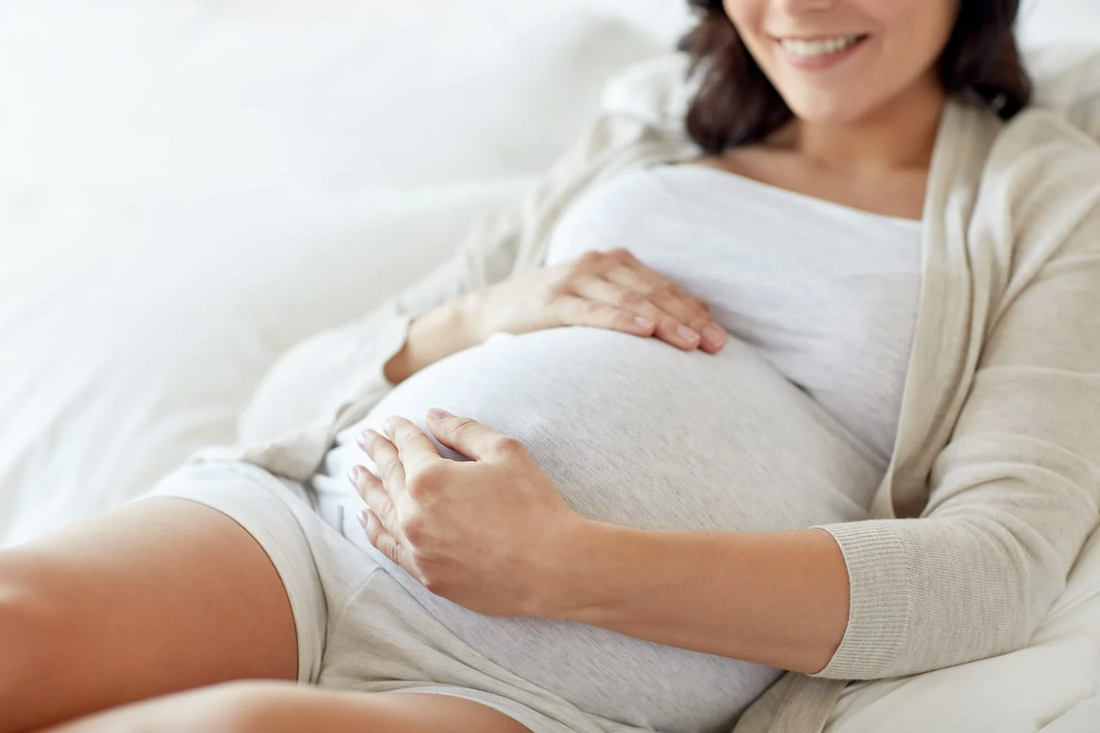
Is It Normal to Have Pain on Your Left Side During Pregnancy?
Share
Left-side pregnancy pain
Many women experience left side pain during pregnancy. Inital pregnancy pain may be due to your body stretching to make room for your baby or digestive issues. Later pain in pregnancy could be caused by the ligaments in your abdomen stretching, kidney infection or a urinary tract infection (UTI).
Many women experience left side pain during pregnancy. Early in your pregnancy, it can be a sign that your body is stretching to make room for your baby, or it can stem from digestive issues such as gastroesophageal reflux disease (GERD) or constipation.
Later in your pregnancy, it can be caused by the ligaments in your abdomen stretching. It can also be a sign of symphysis pubis dysfunction (SPD) or pelvic girdle pain (PGP), which is a condition that occurs when the ligaments supporting the pelvic bones relax due to a pregnancy hormone called relaxin.
Urinary tract infections (UTI) or kidney infections can cause pain in your left side at any point during your pregnancy. Pregnant women are more likely to develop urinary tract infections due to hormonal and structural changes during pregnancy.

Signs and symptoms of left side pain during pregnancy
Different types of left side pain that can be present in pregnancy include:
-
Cramping pain similar to menstrual cramps
- Pressure in your pelvic area
- Cramping in the left side of the lower abdomen
- Pain in your pubic area
- Pain in your lower back
- Pain that goes down your thighs
- Clicking sensation in your pelvis
- Pain with urination
Causes of left side pain during pregnancy
First trimester
Left side pain in the first trimester is usually caused by normal bodily changes from pregnancy. It may also be related to digestive issues that tend to be worse during pregnancy, such as GERD. Left side pain in early pregnancy may also be caused by miscarriage. The most serious cause of left side pain in early pregnancy is an ectopic pregnancy, which needs emergency treatment. UTIs and kidney infections can cause left side pain at any point during pregnancy.
Second trimester
Round ligament pain is the most common cause of pain on either side during the second trimester. The round ligaments support the uterus. They stretch during pregnancy to accommodate your growing baby. This is a sharp pain that’s felt in the abdomen or in the hip area, on either side. Any sudden movement that makes these ligaments retract quickly can cause pain. It only lasts for a few seconds and generally gets better in the third trimester.
Third trimester
Pelvic girdle pain (PGP), sometimes called symphysis pubis dysfunction (SPD), can occur at any stage in pregnancy but is more common late in pregnancy. The pain may occur in your pubic bone, at approximately the level of your hips, on either side of your lower back, or in the perineum, which is the area between your vagina and anus. It may spread to your thighs as well. You may also have a grinding or clicking feeling in your pubic area. PGP is not harmful to your baby, but it can be very uncomfortable for you.
Treatments for left side pain during pregnancy
Treatment for your left side pain will depend on the cause. It may include a combination of home treatments, medication, or therapy.
Normal changes of pregnancy
For left side pain that is related to normal pregnancy changes, the following may be helpful:
-
Don’t do any heavy lifting
- Try sleeping with a pillow between your knees
- Move more slowly but more often
- Use a heating pad, but never for more than 10 minutes at a time
- Rest more often
- Do Kegel exercises
- Use a maternity belt for extra support
- Round ligament pain
If your left side pain is caused by round ligament pain, try some of these options:
- Get extra rest
- Move and change positions slowly
- If you know you need to cough or sneeze, bend and flex your hips
- For persistent pain, your doctor may recommend stretching exercises
- Pelvic girdle pain
Pelvic girdle pain (PGP) can range from mild to severe. You can try the following options for relief:
- Avoid strenuous activity or heavy lifting
- Try a heating pad or ice pack on painful areas, but don’t use a heating pad for more than 10 minutes at a time
- Wear a pelvic support belt
- Do kegel exercises
- Sleep with a pillow between your legs
- Talk to your doctor about pain relievers if the pain is severe
- Talk to your doctor about physical therapy if home measures aren’t helping










